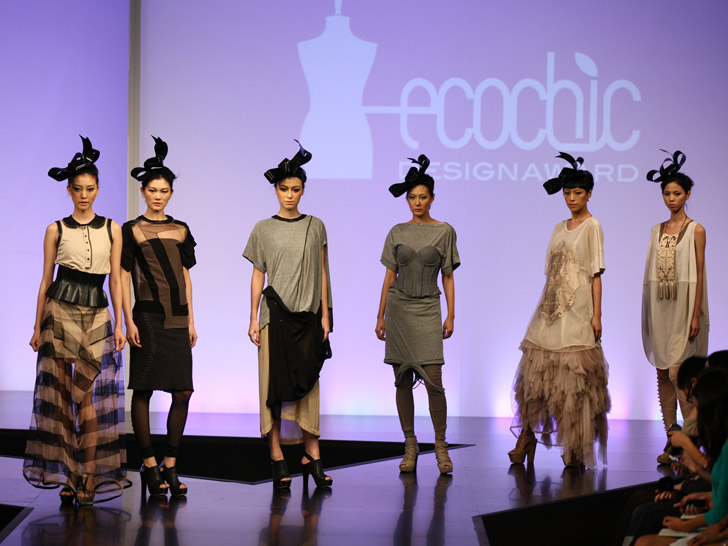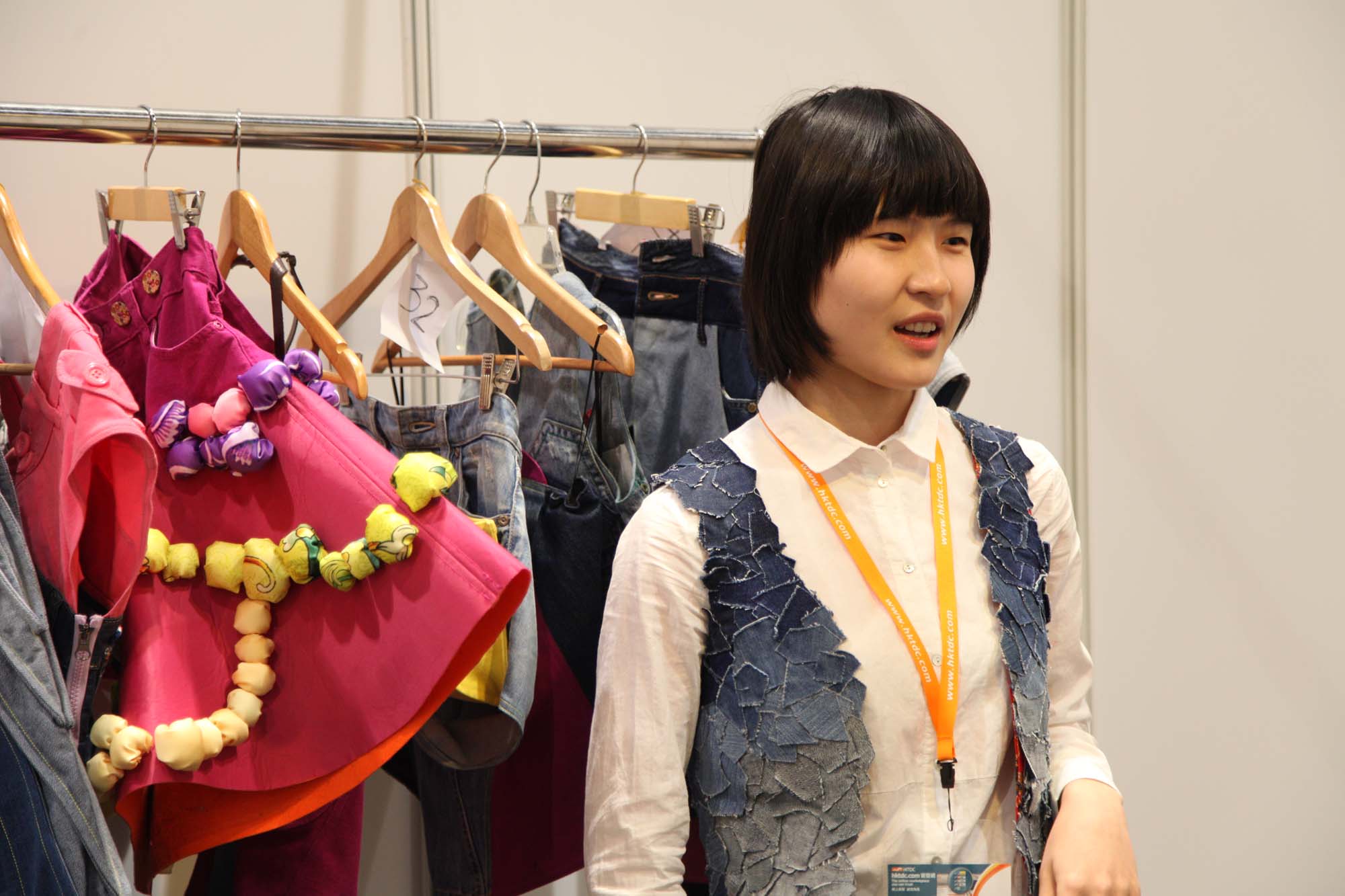The sustainable fashion industry starts to make a name for itself in China
China, being the largest textile producer of the world, has a lot to deal with whether it is the production and the consumption of the global fashion industry or its own massive and growing consumer base. The country experienced a rapid industrial growth that brought serious environmental damages.
The rise of eco-friendly Chinese fashion designers
Since 2011, The EcoChic Design Award choose outstanding eco-friendly fashion designer that wants to make the industry a more sustainable place. Founded in Hong Kong, the competition reward environmentally friendly techniques in designer’s creations. One year later, mainland Chinese could be part of the competition and since then, it expanded to Taiwan, Singapore, Malaysia, UK, France, Germany, Denmark, and Sweden.
The theme of the year is « Modern China Chic » and organizers hope that it will have an impact on the mass popularity of sustainable fashion and particularly on mainland Chinese. They are benefiting from strong and powerful sponsors such as Richemont, Ford, and The Langham Hong Kong. Christina Dean, the founder, and CEO of EcoChic’s organizer Redress, an NGO which promotes environmental sustainability in the fashion industry, wishes that making clothing production less wasteful will avoid a « granola-crunching hippy » image in Asia.
How can sustainable fashion brands be promoted in China?
Designers are thought to influence an estimated 80-90 percent of the environmental and economic costs of a product, which means that they have power over the sustainability of a product. However, most of them are not aware of the sustainability stakes over fashion and textile waste. This is the reason why The EcoChic Design Award saw the day in the first place.
Setting new sustainable goals for fashion in China
The goal of this contest is to form and teach young designers how to create a cloth with minimal textile waste, by using one or more of the sustainable design techniques of zero-waste, by up-cycling and reconstruction. To do so, they give information, resources, online tutorial videos, and lectures throughout the 10-month competition.
Competitors are not the only that can enjoy the education of the contest. Other designers that did not apply can enjoy the knowledge on the platform made for the occasion. Previous alumni are also very welcomed and the professional part of the contest is always interested in what they ended up doing after the competition.
What about pollution generated by textile production?
If there is one industry that pollutes enormously, it is the textile industry. They use both natural resources such as oil, water, or even soil and a lot of different chemicals that provoke environmental impacts like CO2 emissions and wastage. As an example, to produce a pair of jeans, 3,625 liters of water, 3kg of chemicals, 400 MJ of energy, and 13 square meters of harvested land are needed.
How can Chinese fashion brand reduce textile pollution damage?
Environmental pollution and the diseases that it causes are very negative on societies. As an example, 17% to 20% of the water pollution is caused by dyeing and treatment in textile production. This greatly impacts Chinese citizens living in polluted cities where cancer rates are way much higher than the national average.
The consumption society had increased significantly in the fashion industry. With continuous growth like this, the problem is not far from stopping. Nowadays we produce over 80 billion garments per year and we are 7 billion people. So what will happen in 2050 when we will be reaching 9 billion?
How mainland China is reacting to eco-friendly fashion concepts?
So far, the contest has received positive comments from the fashion industry and from the mainland included. More and more fashion institutions from China are getting interested in The EcoChic Design Award and also designers that are likely looking for including sustainable design in their collection by learning and understanding the technical abilities of sustainable design. The project has been welcomed with open arms and the response from sponsors or candidate are very high.
As the new generation sees fashion with fresh tastes, they are less and less interested in big brands and logotypes and prefer new waves of cultural acceptance in domestic fashion designers that reflect individualism and creativity. Therefore, a sustainable fashion retail sector is growing little by little in China. Today, being « eco » represents being able to afford health and safety for your family. This market is still small but the mood seems upbeat and aspirational.
How could eco-fashion become popular for mass population in China?
Let’s not forget how big China is and how huge is the population. Today, Asia has the fastest-growing mass-market fashion retail in the world. Its middle class is also increasing like nowhere else. Those customers are the target for the eco-fashion industry.

Most emerging countries and their consumers are not sensitive to the environmental impact that their act will provoke. Especially when they buy clothes! They are surrounded by brands and designers 24/7 and don’t even think of the « sustainable fashion » sector. Educating them about this new way of buying is way much more difficult than it seems.
How to shake sustainable fashion in China
To be able to make it work, the industry has to deliver sustainable clothes and the consumers need to be educated and informed why buying that product is better for them and for others. The sustainable fashion industry has never been capable to target the mass market. In Asia, the challenge will be even bigger! Nevertheless, if the global fashion brands are able to offer the option to the new consumers, it should improve their knowledge and their behavior concerning preserving the environment.
Knowing the price differences with conventional lines, it will be difficult to compete. In the future though, sustainable fashion should become the norm and not a niche like today. People need to get informed about the damage that the fashion industry causes and to understand that their buying habits influence the way the sector operates to be able to make better decisions in the future. The quality of the product, the place where it has been made, when and how long will you wear it… Those questions should always get in your head before buying an item.
Few Chinese designer that needs to be followed
Xinyan Dai is currently studying Fashion Design at the Beijing Institute of Fashion Technology in China and already launched her first sustainable collection for the competition. She has bright days in front of her. Zhang Na is also an established sustainable designer. In Hong Kong, this trend already has some buyers. Wan & Wong Fashion, Eric Wong/Absurd Laboratory, and Glori Tsui are the most known ones.

Read more about fashion in China:








2 comments
Otto.van.otto
Good morning! I am interested in writing an article on this topic, would you have a scope of existing apparel brands by consumer profile in China? Feel free to reach me